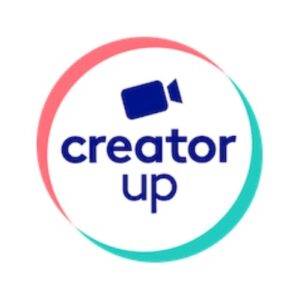How AI Makes Instructional Design Easier
Automate Tasks and Spark Creativity
AI can take on a lot of the heavy lifting, helping IDs work smarter, not harder. When creativity stalls, text-based LLMs (Large Language Models) like ChatGPT or Claude can jump in with fresh ideas for lessons or visuals, helping bring concepts to life. Beyond brainstorming, these AI models are trained to understand and generate human-like text, making them ideal for simplifying time-consuming tasks like drafting course outlines, generating quizzes, and summarizing complex materials. This allows IDs to focus on making the content engaging and relevant for learners.
Improve Collaboration with Experts
AI doesn’t just benefit IDs; it also helps subject matter experts (SMEs) make the most of their time. By handling initial drafts of lesson scripts, course descriptions, or assessments, AI enables SMEs to focus on reviewing and refining content instead of starting from scratch. This streamlined process reduces the back-and-forth between SMEs and IDs, making it easier to move from a concept to a polished course.
Keep Clients in the Loop
AI also makes it easier to communicate ideas early in the design process. Quick content drafts or short avatar videos created with D-ID or HeyGen allow clients to see the vision and provide feedback sooner. This is a big shift from relying only on course outlines, giving designers a more dynamic way to ensure everyone is on the same page from the start.
The Power of a Great Prompt Library
Using AI to spark creativity, automate tasks, and improve communication is made easier by a well-developed prompt library. A prompt library is a set of clear instructions that records ready-made prompts that IDs, SMEs, and other content developers can use to quickly generate well-structured quizzes, engaging and educational scripts, or to summarize the notes or transcript from a recent meeting.
Creating a good library involves determining content types, crafting precise prompts that capture all the elements needed for the deliverable, and then testing and tweaking until they deliver consistent results. This sometimes requires testing across multiple LLMs to get the output you desire. The key is to share the prompt library with all team members so that each person is using the most up-to-date prompt. Team members should record:
- The prompts they are using,
- The tool or LLM they used,
- The last date of use
A well-developed prompt library speeds up design and ensures consistent style and tone across all content (regardless of who creates it), allowing instructional designers to focus on developing impactful, learner-centered experiences that align with educational objectives.
For teams further along in AI integration, custom GPTs or tools like CreatorUp’s Daisy with pre-engineered prompts streamline workflows even more. These tools apply the latest engines and prompts automatically, reducing the need for manual prompt referencing and delivering optimal results with ease.
How Generative AI Brings Multimedia and Stories to Life
AI’s impact goes beyond just saving time. It’s also a powerful tool for storytelling and multimedia creation. It can transform dry lessons into interactive adventures, using videos, animations, and dynamic visuals to bring complex ideas to life. Imagine turning a history lesson into a virtual journey where learners are guided through major events, transforming what was once a boring lecture into an engaging story. With the right prompts and tools, AI helps IDs create learning experiences that connect with learners, making abstract concepts more accessible and memorable.
AI Storytelling Workflows that Work
To get the most out of AI storytelling, workflows like the one below provide a step-by-step framework, whether you are combining multiple tools or using all-in-one solutions.
Beyond the workflow, below are some specific use cases IDs can use as a starting point to make storytelling efforts more efficient.
Use Case #1 – Create Consistent Characters
With Midjourney or Figma, you can create a character for a course. Then, tweak prompts or work with a graphic designer to adjust facial expressions and positions for that character to appear across different lessons in the course, keeping visuals consistent.
Use Case #2 – Quick Video Production
If you are taking the DIY approach, tools like Open AI’s ChatGPT or Anthropic’s Claude, can easily handle script-writing based on learning objectives. While tools like HeyGen add visual magic, creating a streamlined way to produce educational videos.
If you’ve got an all-in-one AI tool aggregator like Daisy from CreatorUp, you can create a pipeline to have the output from one step automatically become the input to the next.
Regardless of which tool you choose, IDs and content developers can create engaging content quickly without sacrificing quality.
Use Case #3 – Building Scenarios
If you are using a mix of tools, you might start with a text-based LLM to draft a script and storyboard, then use visual tools like Midjourney to create graphics and plug them all into Runway to create interactive video. While this use case does require an editor, the resulting interactive simulations offer a space where learners can test their knowledge in lifelike scenarios, creating a more immersive and impactful learning experience.
Picking the Right Tools for the Job
Choosing the right AI tools depends on your project’s needs. For quick drafts and brainstorming, widely available AI tools – like Midjourney, HeyGen, ChatGPT, and more – can be a great starting point. They’re flexible and easy to access, making them ideal for projects where speed is a priority.
For teams that require more control and privacy, specialized AI tools like Daisy offer a balance of pre-built prompts and stronger privacy features, making them better suited for teams where privacy and confidentiality are paramount.
For those who want the most customized experience, combining specialized tools with custom-built AI solutions can automate tasks like creating quizzes or interactive scenarios and deliver them to your brand and editorial standards, saving even more time. While it takes more time to set up, this approach provides a tailored experience that can adapt to unique project requirements.
Navigating AI’s Challenges
While AI can speed up content creation, there are still challenges to overcome:
Challenge #1: Getting It Right
AI might be fast, but it still requires a human touch to ensure accuracy and alignment with learning goals. AI can struggle with seemingly simple details, from getting hands right in visuals and capturing the exact tone needed to more complex elements, like ensuring learning goals are actually met.
This is where subject matter experts, instructional designers, and creative professionals like scriptwriters, producers, and editors come in. They help refine AI-generated content, making sure it reads well, looks polished, and captures the right tone. More importantly, a skilled human review of the full body of generated content ensures that client goals are achieved and that educational standards are satisfied in a way that makes the learning journey logical, effective, and engaging. Effective human and AI collaboration can create high-quality content that is coherent, meaningful, and truly hits home.
Challenge #2: Staying Fair, Inclusive, and Accessible
AI can sometimes reflect biases from the data it learns from, making it essential for IDs to review outputs for fairness and accessibility. This means double-checking AI-generated content to ensure it is balanced, accurate, and respectful while considering the needs of all learners. For accessibility, content developers should ensure that videos include accurate captions, text content is screen reader-friendly, and visuals are clearly labeled with alt-text for those with visual impairments. While automated tools like voice-to-text can help, we still need a human to review and maintain accuracy. By doing this, educators can ensure that the content is inclusive and accessible to all, providing a better experience for everyone.
Challenge #3: Bringing Educators Onboard
While the benefits of AI are easy to articulate and almost feel magical at times, there are also valid concerns for educators and instructional designers alike. Just as any change can feel like a threat, AI must be introduced, modeled, and supported from the top down. This applies to administrators and leaders in the workplace, as well as teachers in the classroom. There is no doubt that AI will continue to evolve and be integrated even further into the day-to-day technology in use at work, school, and home. As educators, it is our job to help prepare students to leverage the best parts of AI to understand the potential risks to privacy and academic integrity and to manage other issues we’ve yet to uncover.
The issues around integrity are especially sensitive to educators. In other industries, using AI to help compose (for example) marketing copy or an email isn’t necessarily frowned upon. However, using AI to compose an assignment definitely is. It’s important for educators to realize that AI can be used for so many other things to lighten their load. For example, AI translation tools can instantly create identical but translated materials to support students from diverse linguistic backgrounds, creating a more inclusive classroom environment. AI tools can be used to quickly generate individualized makeup work, supplemental worksheets, review packets, or generate assignments tailored to meet different learner needs. Ultimately, when used thoughtfully, AI has the potential to augment and enhance the teaching profession, freeing up instructors to focus on high-touch, high-value tasks that require human empathy and creativity.
The Future of AI in Instructional Design: What’s Next?
As AI continues to evolve, the future of instructional design holds even greater potential. The next wave of AI innovations will likely focus on more personalized learning experiences, allowing educators to tailor content to individual learner needs in real time. Enhanced AI-driven analytics could provide deeper insights into learner engagement and progress, enabling designers to adjust courses dynamically. AI could further simplify multimedia creation, making it easier to produce immersive, interactive learning environments. The challenge ahead lies in balancing this powerful technology with ethical considerations, ensuring that AI serves as a tool to support everyone involved in education—from instructional designers and administrators to teachers and support staff—while enhancing learning for students. It’s about harnessing AI to enrich the educational experience without losing the essential human touch.







